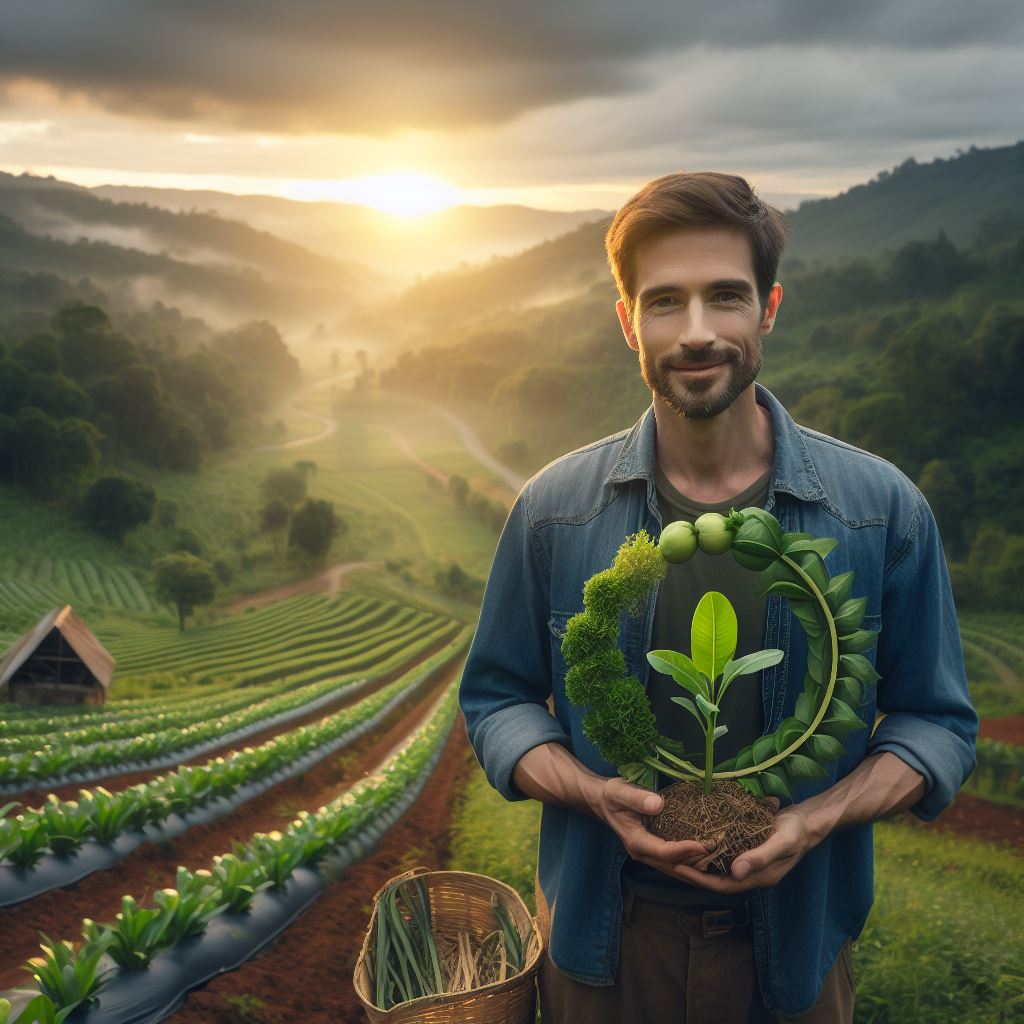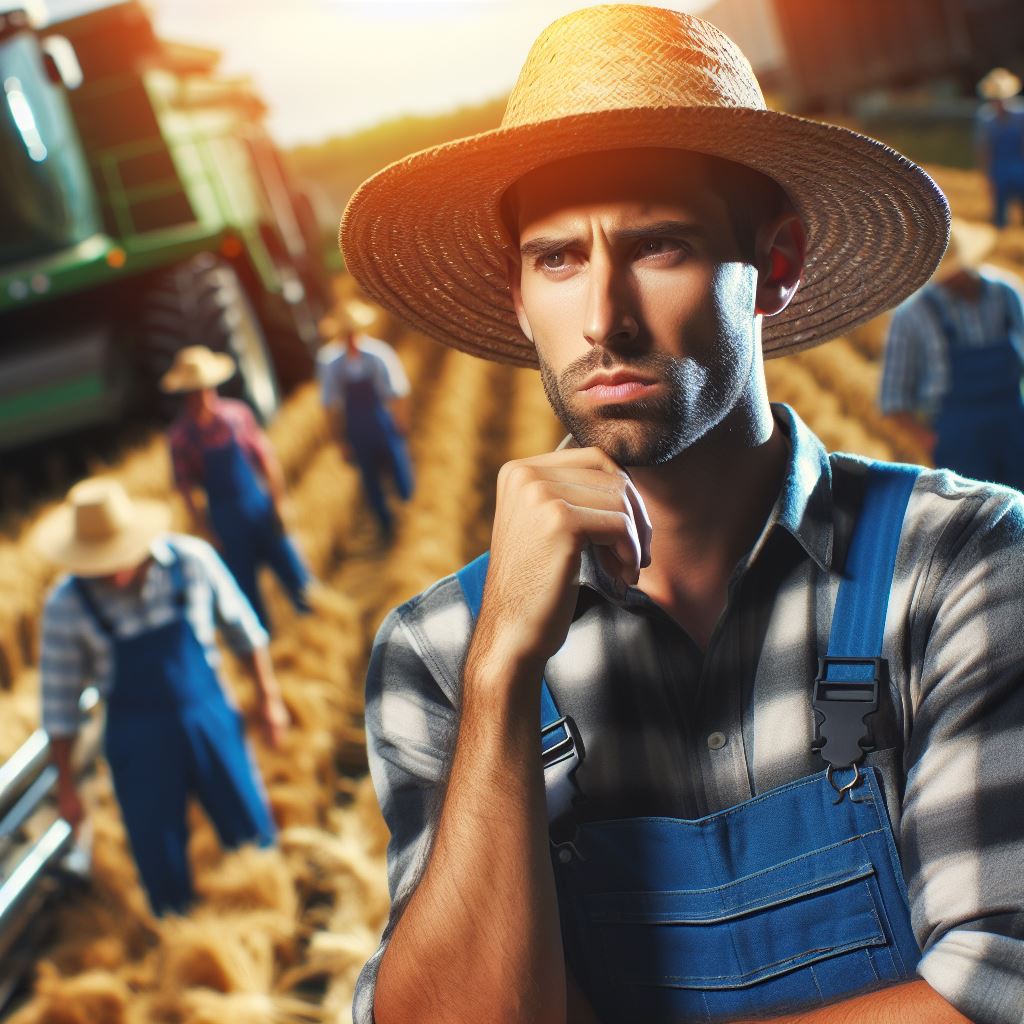Introduction
Vertical farming is an innovative agricultural technique that involves growing crops in vertically stacked layers, usually within a controlled environment such as an indoor facility or a greenhouse.
This method allows for the efficient use of space and resources, making it an appealing solution to the challenges of traditional farming.
However, like any farming method, vertical farming comes with its own set of advantages and disadvantages.
On the positive side, vertical farming offers numerous benefits.
Firstly, it maximizes land usage as crops are grown in layers, effectively utilizing the vertical space.
This is particularly valuable in urban areas where land is limited.
Secondly, vertical farming enables year-round crop production by creating optimal growing conditions regardless of the external climate.
Consequently, food production can be remarkably consistent and not dependent on seasonal changes.
Moreover, vertical farming reduces the need for pesticides and herbicides due to the controlled environment, resulting in safer and healthier produce.
It also minimizes the use of water by recycling and recirculating it within the system, making it an environmentally sustainable method.
Statement stating the purpose of the blog post
Additionally, vertical farming can reduce transportation costs and carbon emissions since the crops can be grown near the consumer, eliminating the need for long-distance transportation.
However, vertical farming faces certain challenges.
The initial set-up costs can be high, making it less accessible for small-scale farmers.
The control systems and technology required for maintaining the ideal growing conditions can also be complex and expensive to maintain.
Furthermore, energy consumption can be significant, especially when relying on artificial lighting for the crops.
In fact, vertical farming has the potential to revolutionize agriculture by overcoming the limitations of traditional farming methods.
It offers numerous advantages in terms of space utilization, year-round production, and environmental sustainability.
Nonetheless, it also presents challenges related to cost, technology, and energy consumption.
By further exploring these advantages and disadvantages, we can gain a better understanding of the potential of vertical farming and its suitability for future food production.
What is vertical farming
In recent years, traditional farming methods have faced numerous challenges such as land scarcity, climate change, and the growing global population.
As a response to these issues, vertical farming has emerged as a viable solution.
Vertical farming is an innovative agricultural technique that involves growing crops in vertically stacked layers, using carefully controlled environments such as indoor facilities or high-rise buildings.
This method utilizes advanced systems like hydroponics and aeroponics to supply plants with nutrients and water, without relying on soil.
Benefits of vertical farming
1. Maximizing land use
Traditional farming requires vast amounts of land, which is increasingly scarce.
Vertical farming allows for efficient space utilization by growing crops in vertical layers, potentially yielding multiple harvests each year.
2. Increased crop yields
Vertical farming techniques can provide optimal growing conditions, allowing crops to thrive and achieve higher yields compared to traditional methods.
Controlled environments optimize factors such as temperature, light, and nutrients.
3. Water conservation
Vertical farming employs advanced irrigation systems that recycle water, minimizing water wastage and reducing the overall water footprint.
This method can use up to 90% less water than traditional farming.
4. Reduced pesticide use
The controlled environment of vertical farms greatly reduces the need for pesticides.
The risk of pests, diseases, and invasive species affecting crops is significantly lowered, leading to healthier and safer produce.
5. Year-round production
Vertical farming eliminates the dependence on seasonal variations, allowing for consistent and continuous crop production throughout the year.
This ensures a reliable food supply, minimizes import dependence, and reduces food waste.
In short, vertical farming offers numerous benefits that make it a promising solution for the challenges faced by traditional agriculture.
By maximizing land use, increasing crop yields, conserving water, reducing pesticide use, and enabling year-round production, vertical farming presents a sustainable and efficient approach to meet the world’s increasing food demands.
Read: Soldiers to Soil: Veterans’ Farming Frontiers
Transform Your Agribusiness
Unlock your farm's potential with expert advice tailored to your needs. Get actionable steps that drive real results.
Get StartedHighs of Vertical Farming
Vertical farming has gained significant attention in recent years due to some noteworthy advantages it offers.
Let’s explore the highs of this innovative agricultural technique.
Space efficiency
One of the major advantages of vertical farming is its ability to efficiently utilize unused urban space.
In densely populated areas where land availability is limited, vertical farms can be set up in buildings or even small spaces, making it possible to grow crops in areas that would otherwise remain unused.
Additionally, vertical stacking of plants is a unique aspect of this farming method.
By arranging plants in vertically stacked layers, utilizing techniques like hydroponics or aeroponics, farmers can grow multiple crops one above the other.
This stacking maximizes the use of vertical space, enabling the cultivation of a large quantity of crops within a small footprint.
Reducing transportation issues
Another significant advantage of vertical farming is its role in reducing transportation issues associated with traditional agriculture.
With vertical farms located in or near urban areas, there is no need for long-distance transportation to deliver produce to consumers.
This means fresher and more nutritious produce as it can be harvested and distributed locally, reducing the time and distance between harvest and consumption.
Moreover, vertical farming contributes to decreased carbon emissions.
The transportation of agricultural products over long distances significantly contributes to greenhouse gas emissions.
By minimizing the need for transportation, vertical farming helps mitigate these emissions and combat climate change.
Control over growing conditions
Vertical farming provides precise control over growing conditions, ensuring optimal environments for plant growth.
By regulating factors such as temperature, light, and humidity, farmers can create the perfect conditions for each crop, resulting in enhanced productivity and quality.
In traditional farming, external factors like weather conditions can affect crop growth.
Vertical farming eliminates these uncertainties by maintaining a controlled environment, shielding plants from extreme temperature fluctuations, and providing consistent lighting and humidity levels.
This control over growing conditions enables year-round production and eliminates the risk of crop failure due to unfavorable weather conditions.
Additionally, vertical farming systems incorporate advanced techniques such as integrated pest management.
By creating a controlled and closed environment, vertical farms can protect crops from pests and diseases.
This reduces the reliance on chemical pesticides, making vertical farming a more sustainable and eco-friendly approach to cultivation.
In general, vertical farming offers various highs that make it a promising and sustainable alternative to traditional agriculture.
Its space efficiency, reduction in transportation issues, and precise control over growing conditions contribute to increased productivity, sustainability, and the ability to grow crops in urban areas.
With further advancements and adoption, vertical farming has the potential to revolutionize the way we grow and consume food.
Read: From Classroom to Crops: Teachers Turn to Farms

Lows of vertical farming
Vertical farming offers numerous advantages, such as year-round production, reduced water usage, and minimal reliance on pesticides.
However, like any agricultural method, it also has its fair share of challenges and drawbacks.
In this section, we will explore the lows of vertical farming and discuss some of the significant obstacles that farmers face in this innovative approach to cultivation.
Although vertical farming has made significant progress in recent years, the initial setup costs can be a prohibitive factor for some farmers.
Establishing the necessary infrastructure, such as climate-controlled growth chambers, efficient lighting systems, and automated irrigation can require a considerable financial investment.
Additionally, the high energy consumption associated with vertical farming operations can lead to substantial electricity bills, impacting the long-term profitability of the farm.
Thus, adequate financial planning and access to capital are essential for overcoming these initial setup costs.
Technical challenges
Furthermore, vertical farming systems come with their fair share of technical challenges.
Maintaining the complex systems involved in vertical farming, including nutrient delivery systems, environmental controls, and automated harvesting mechanisms, requires continuous monitoring, adjustments, and repairs.
Farmers need to possess advanced technical knowledge or hire professionals with the necessary expertise to ensure the smooth operation of the farm.
Limited crop varieties
Moreover, vertical farming often focuses on specific crop varieties, primarily leafy greens and herbs.
While these crops have high market demand and short growth cycles, the limited variety of crops can be a disadvantage for farmers who wish to diversify their produce.
Additionally, growing certain crops, such as root vegetables, in vertical farming systems can present challenges due to the space requirements and the need for specific conditions, such as adequate soil depth for root development.
Despite these challenges, vertical farming has the potential to revolutionize the agricultural industry by providing a sustainable solution for urban areas with limited arable land.
Overcoming the lows of vertical farming requires technological advancements, research, and continuous improvement in both crop diversity and cost-efficient production systems.
By addressing these drawbacks, vertical farming can truly reach its full potential and contribute to the future of sustainable agriculture.
Read: Chefs in Fields: Culinary Pros Go Farming
Vertical farming success stories
Vertical farming, as a concept, has gained significant momentum in recent years.
The success stories shared by various companies in this field highlight the potential and benefits of vertical farming.
Two notable examples are AeroFarms and Plenty Unlimited.
Examples of successful vertical farming projects
AeroFarms, based in Newark, New Jersey, has revolutionized indoor farming through its vertically integrated system.
They have perfected the art of growing leafy greens and herbs without the use of soil through aeroponics.
By misting the roots with a nutrient-rich solution, the plants are able to thrive in stacked trays.
This method not only saves space but also allows for precise control over temperature, humidity, and light, resulting in higher crop yields.
AeroFarms boasts that they can grow plants two to three times faster than traditional farming methods, with 95% less water consumption.
Plenty Unlimited, on the other hand, focuses on growing a wide variety of fresh produce in vertical farms.
They utilize a combination of hydroponics, LED lighting, and artificial intelligence to create optimal growing conditions for plants.
Their indoor farms are vertically stacked, enabling them to grow large quantities of crops in a relatively small space.
The use of AI technology allows for continuous monitoring and adjustment of environmental factors, ensuring the best possible growth conditions for the plants.
Plenty Unlimited’s goal is to provide local communities with fresh, nutritious produce year-round, reducing the carbon footprint associated with long-distance transportation.
Achievements and innovations in vertical farming
Aside from these success stories, there have been several achievements and innovations in the field of vertical farming.
One notable achievement is the increased efficiency and sustainability offered by this farming method.
By growing crops indoors, vertical farming mitigates the impact of weather conditions, pests, and diseases.
This allows for consistent crop production throughout the year, independent of seasonal variations.
Additionally, vertical farming requires significantly less land compared to traditional agriculture, making it ideal for urban areas where space is limited.
The controlled environment also reduces water usage and eliminates the need for harmful pesticides, resulting in a more sustainable and environmentally friendly farming practice.
Moreover, vertical farming has a positive impact on local communities.
Urban areas often lack access to fresh and nutritious produce, leading to food deserts. Vertical farming can address this issue by producing fresh crops in the heart of the city.
By shortening the supply chain, these farms can deliver produce directly to local markets and grocery stores, ensuring that residents have access to healthy food options.
This not only improves food security but also promotes healthy eating habits within communities.
In a nutshell, vertical farming success stories such as AeroFarms and Plenty Unlimited highlight the potential of this innovative farming method.
The achievements in efficiency and sustainability, as well as the positive impact on local communities, demonstrate the value of vertical farming in addressing food security and environmental concerns.
As technology continues to advance, the future of vertical farming holds great promise for revolutionizing the way we grow and consume fresh produce.
Read: Artists to Agro: Creative Minds on Farms
Conclusion
While vertical farming presents both benefits and challenges, its transformative potential cannot be overlooked.
As the global population continues to grow and urbanize, the need for sustainable farming methods becomes increasingly urgent.
Vertical farming offers a promising solution to meet these demands while minimizing environmental impact and maximizing efficiency.
While there are hurdles to overcome, the benefits of vertical farming, such as increased crop yields, reduced water usage, and year-round production, make it a compelling option for the future of agriculture.
By addressing challenges such as high initial costs and energy consumption through technological advancements and innovative approaches, vertical farming has the potential to revolutionize the way we grow food.
Ultimately, the success of vertical farming will depend on continued investment, research, and collaboration within the agricultural industry.
With dedication and perseverance, vertical farming can lead us towards a more sustainable and resilient food system, ensuring a brighter future for generations to come.
Showcase Your Farming Business
Publish your professional farming services profile on our blog for a one-time fee of $200 and reach a dedicated audience of farmers and agribusiness owners.
Publish Your Profile



